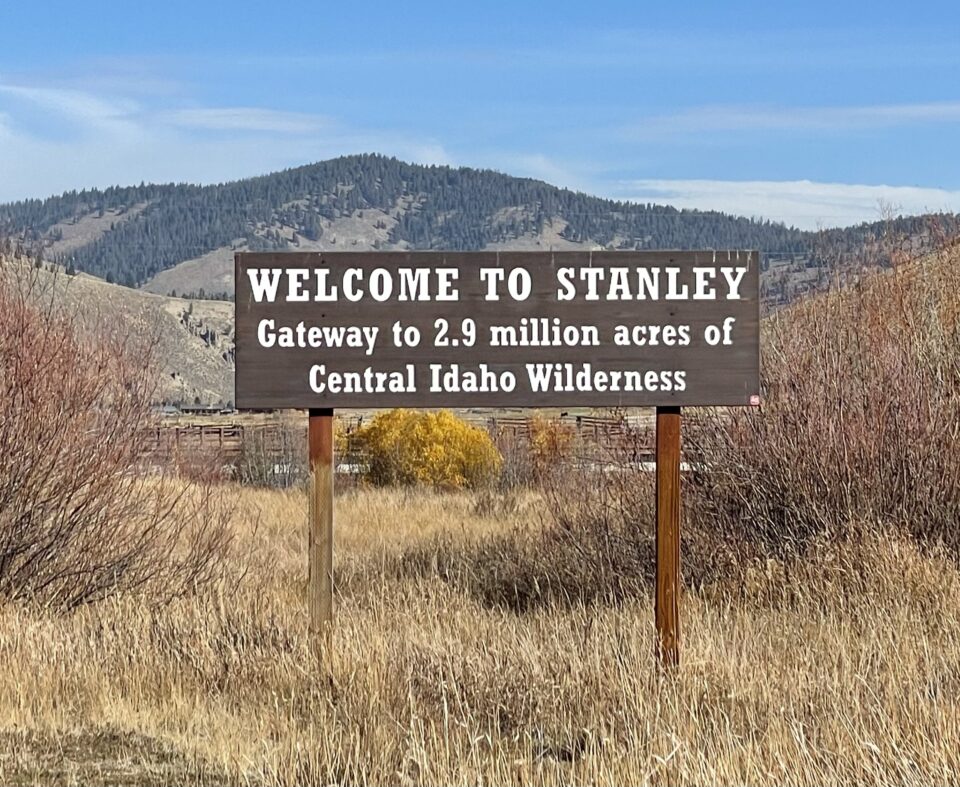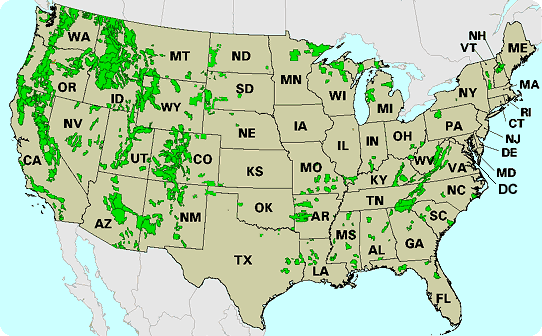
Photo Credit: SIHA staff
Upon driving into Stanley, visitors pass beside a large roadside sign that welcomes them into town, the self-proclaimed gateway to 2.9 million acres of Idaho wilderness. Living up to their reputation for loving public lands, Idahoans boast the third largest percentage of federally owned lands out of all fifty states at 61.63%, coming in ahead of Alaska by a mere 0.39%. And at the heart of all this public land sits the Sawtooth National Recreation Area. But what does this title mean? What sets a National Recreation Area apart from other parks and preserves?
A National Recreation Area is generally defined as a swath of preserved terrain (including land and water) that has been protected by an act of Congress due to the area’s natural resources, scenic attributes, and recreational opportunities. Unlike other types of land designations, like a National Park, there is no one set of laws guiding management of these areas; each one is unique. Also unlike a National Park, which typically aims to preserve the historic or cultural qualities of a landscape, the main intention of Recreation Areas is to get Americans into the great outdoors.
There are currently 40 National Recreation Areas across the country, managed by the National Park Service, the Bureau of Land Management, or the US Forest Service (USFS).
But among all of this public land, you might wonder, how does the government determine which agency oversees the land? Most often, it is the physical, natural, or cultural/cultural characteristics of the land that is considered, along with the particular missions and goals of the agency.
Four agencies manage almost 95% of the roughly 640 million acres of public federal land in the United States: the Bureau of Land Management overseeing around 247 million acres, the U.S. Fish and Wildlife Service managing 95 million land acres and 760 million submerged acres, the National Park Service in the Department of the Interior preserving 85 million acres, and the U.S. Forest Service in the Department of Agriculture managing 193 million acres.
These agencies administer their lands under different statutorily defined missions. The Bureau of Land Management and Forest Service manage most of their lands for sustained yields of multiple uses, including recreation, grazing, timber, mineral production, watershed, wildlife and fish habitat, and conservation. The Fish and Wildlife Service has a dominant-use mission for most of its lands—to conserve plants and animals for the benefit of present and future generations—although other priority uses are provided for, if compatible. The National Park Service administers its lands with the dual purpose of preserving resources and providing for their enjoyment by the public.
The Sawtooth National Recreation Area is managed by the Forest Service. This means that the land can be used for grazing livestock, timber and logging, and other private uses. Congress authorized the Forest Service to acquire land and development rights for the purpose of preserving and protecting the values for which the Sawtooth NRA was created. Since 1974, several thousand acres have been purchased by the United States.

Map of Land managed by the US Forest Service in the continental United States. Photo Credit: USDA Forest Service.
In addition, conservation easements (sometimes called scenic easements) have been purchased to restrict development on private land, while allowing these lands to remain in private ownership. Private land and businesses can be found all around the Sawtooth NRA, particularly around the towns of Stanley and Lower Stanley, the Redfish complex, and the many homes in the Stanley Basin. These easements help the Forest Service to maintain both their mission of allowing varied uses of the land and protecting it for the future.
Along with easements, some land and buildings on the Sawtooth NRA are operated under special use permits. The Sawtooth Interpretive and Historical Association (SIHA) are granted these permits to run the Redfish Lake Visitor Center and the Stanley Museum. Though both buildings are directly owned by the US Forest Service, SIHA operates these buildings to provide information and education to the public.
While the ins and outs of managing public lands in the United States are far more technical, both in writing and in practice, it’s important to recognize the differences in land designations so that we can continue to preserve and protect the natural resources for future generations, both here in Idaho and across the United States.
For further detail about land designations, check out the links below:
Azelie Wood is a 2024 Historic Specialist at the Stanley Museum. Though she is a California native, she has fallen in love with the Sawtooth Mountains. In her free time, she enjoys hiking and reading.